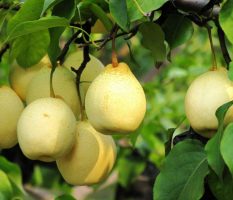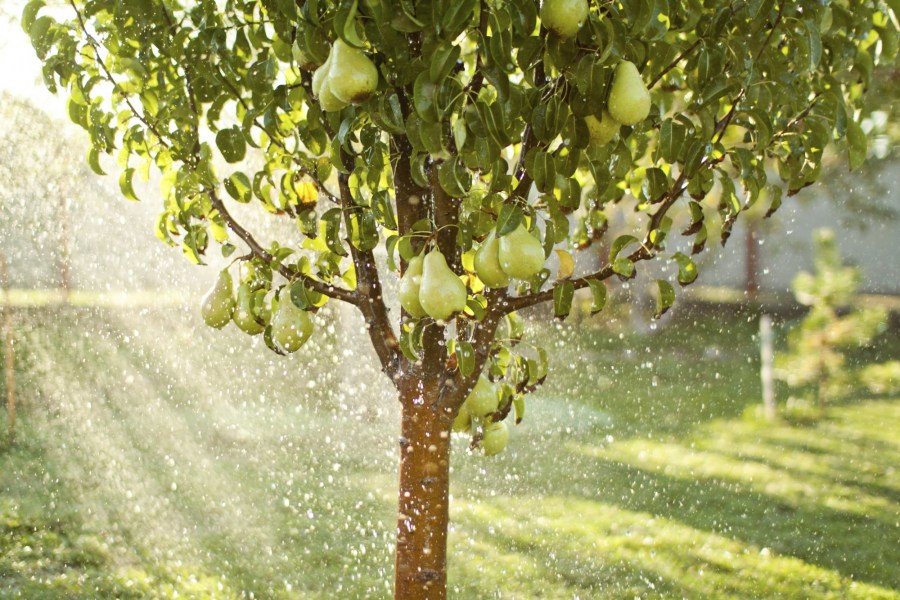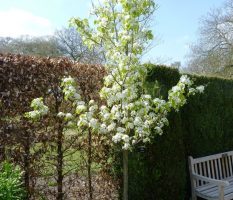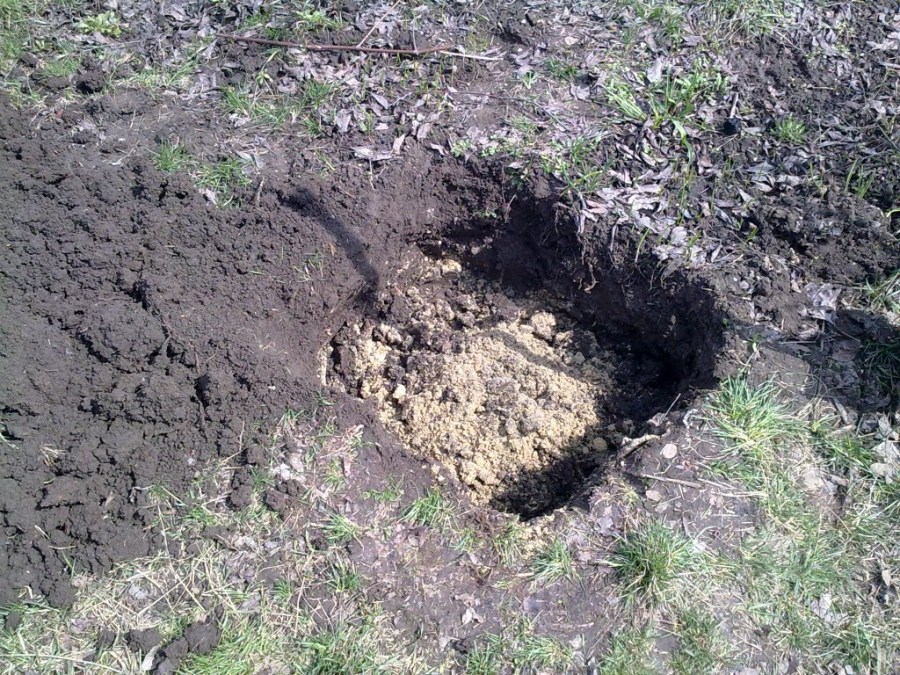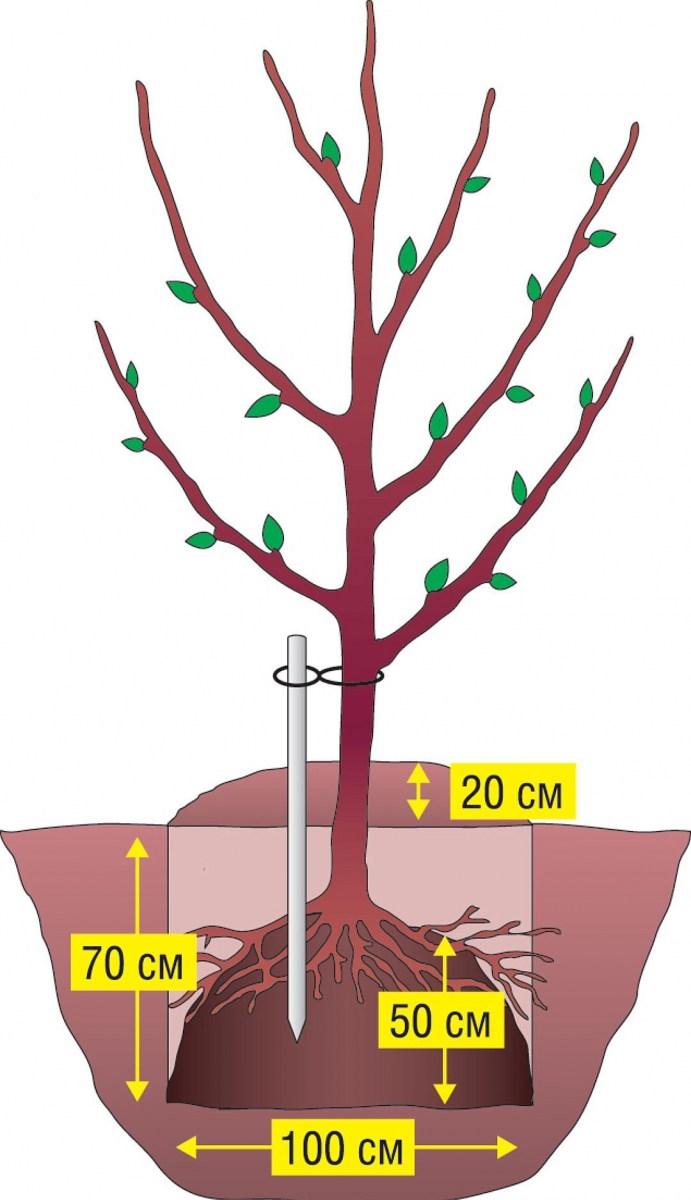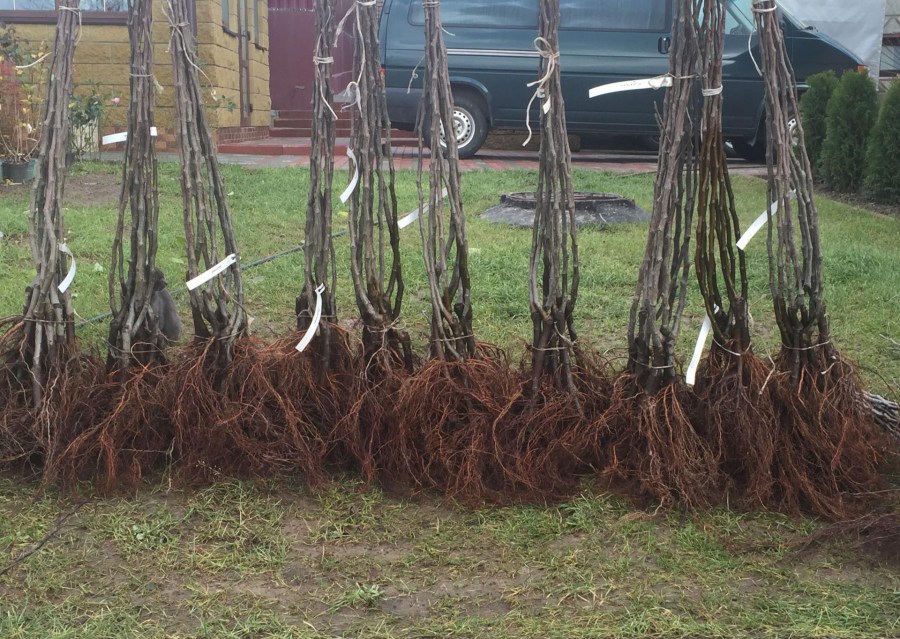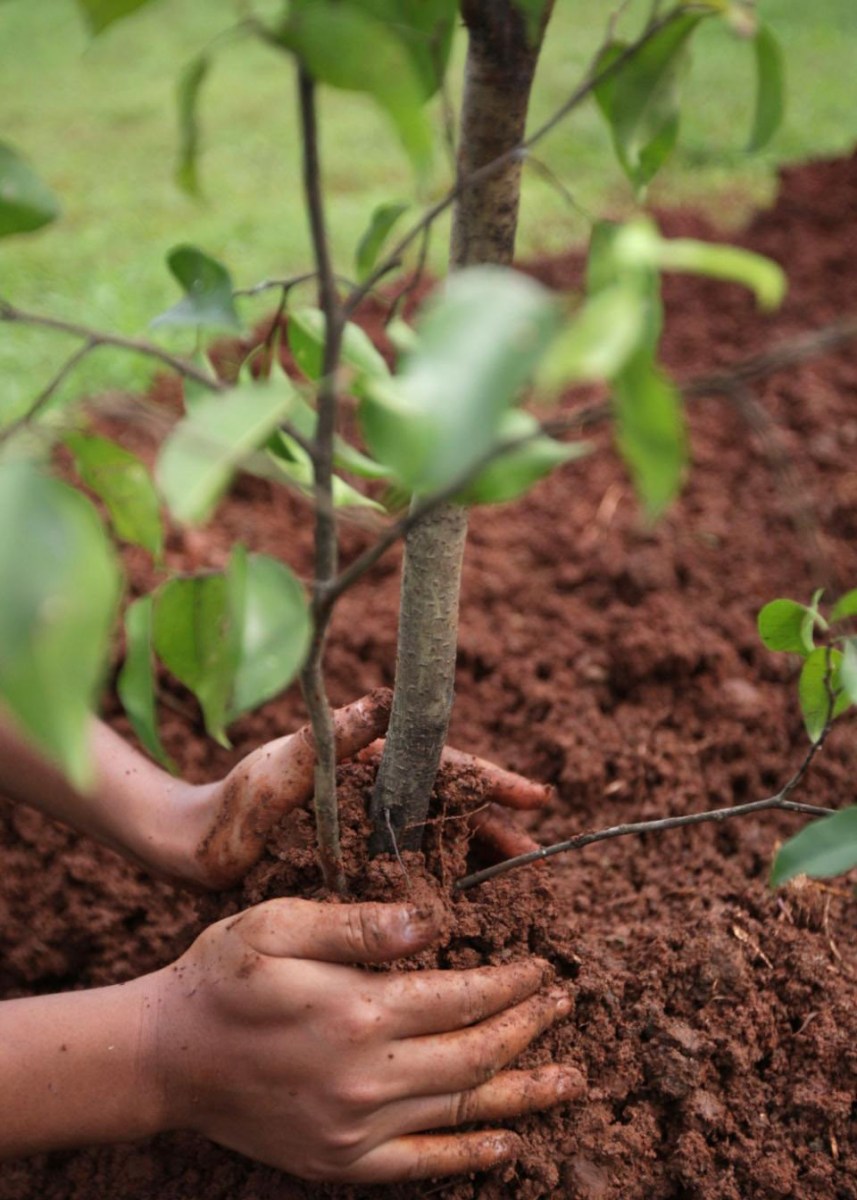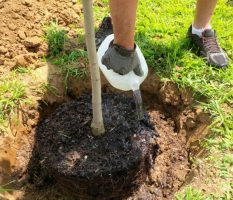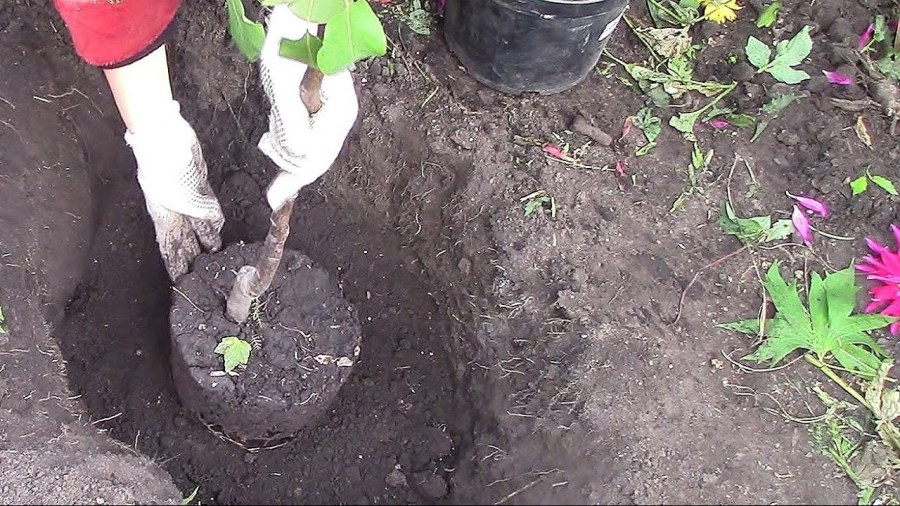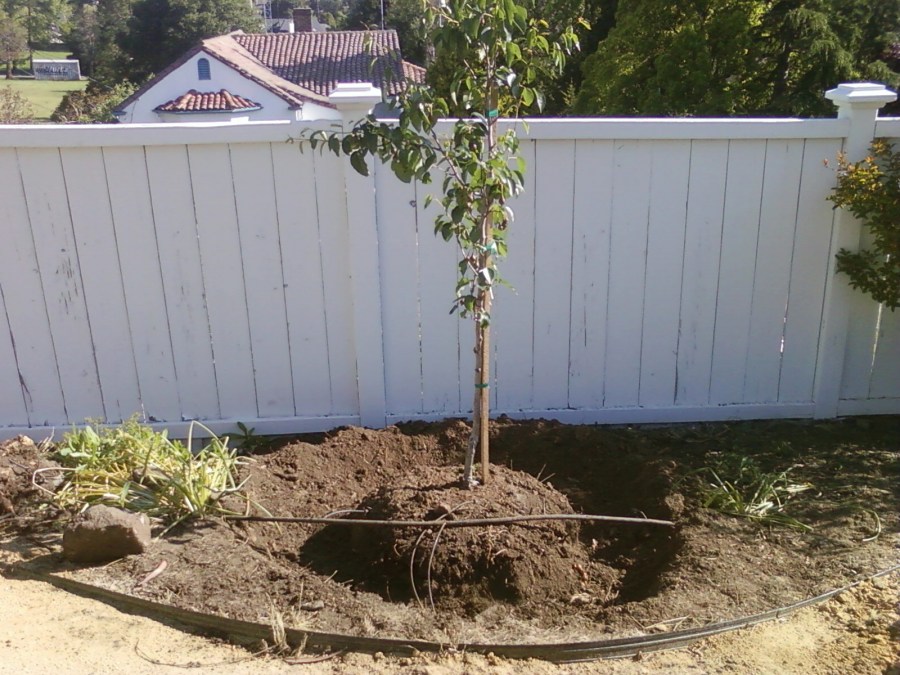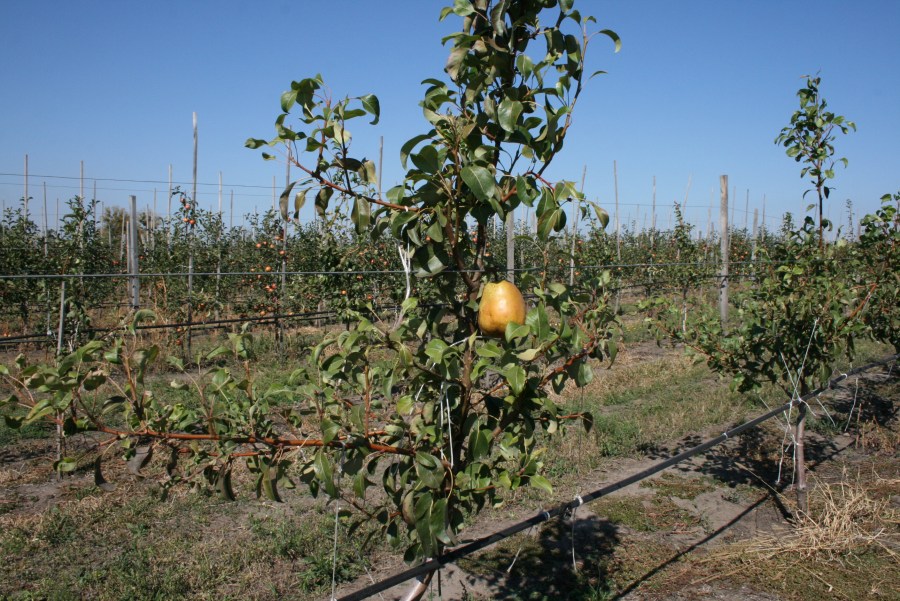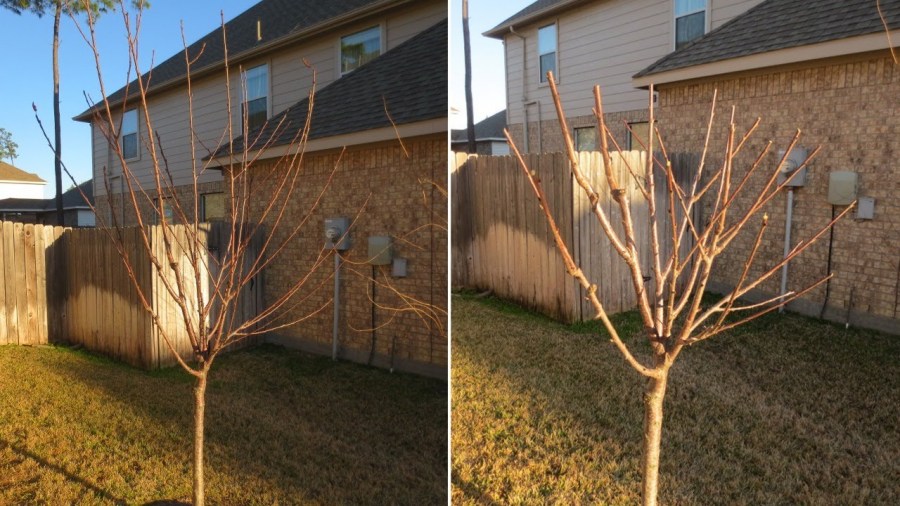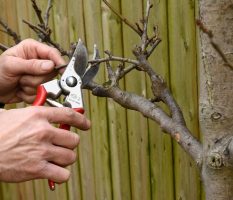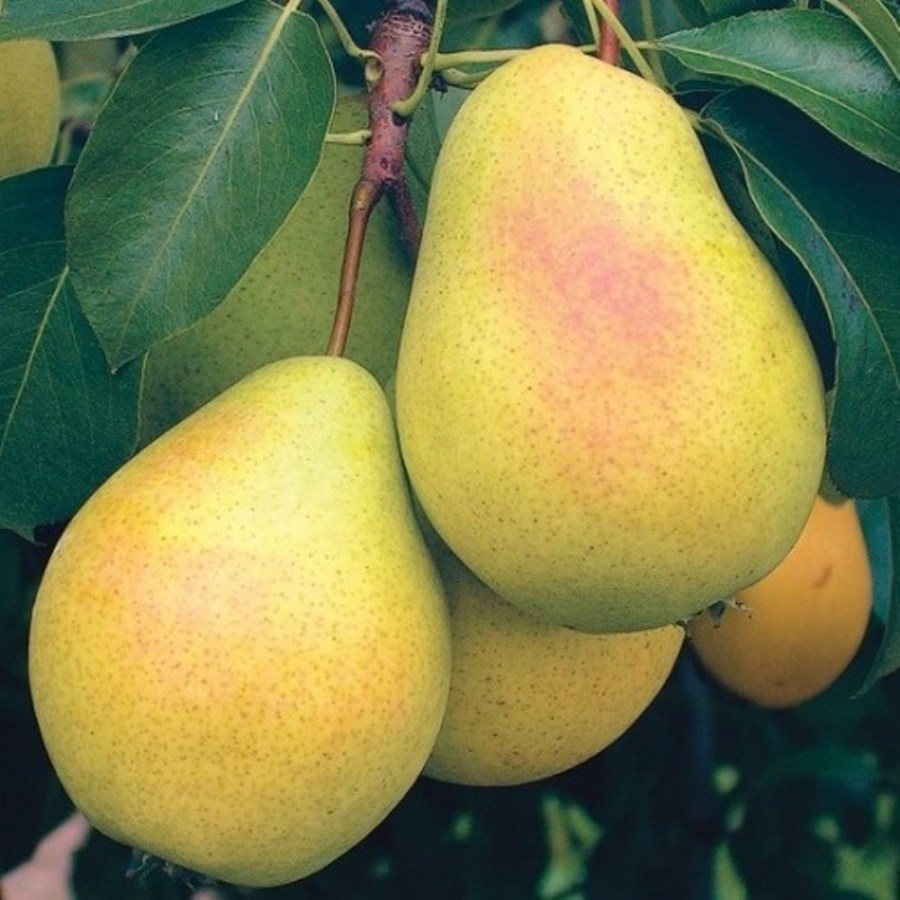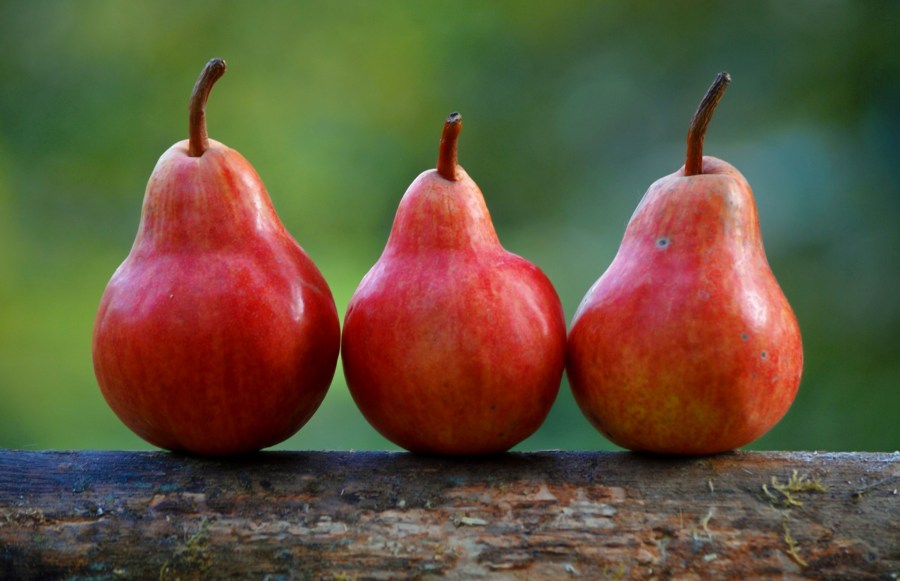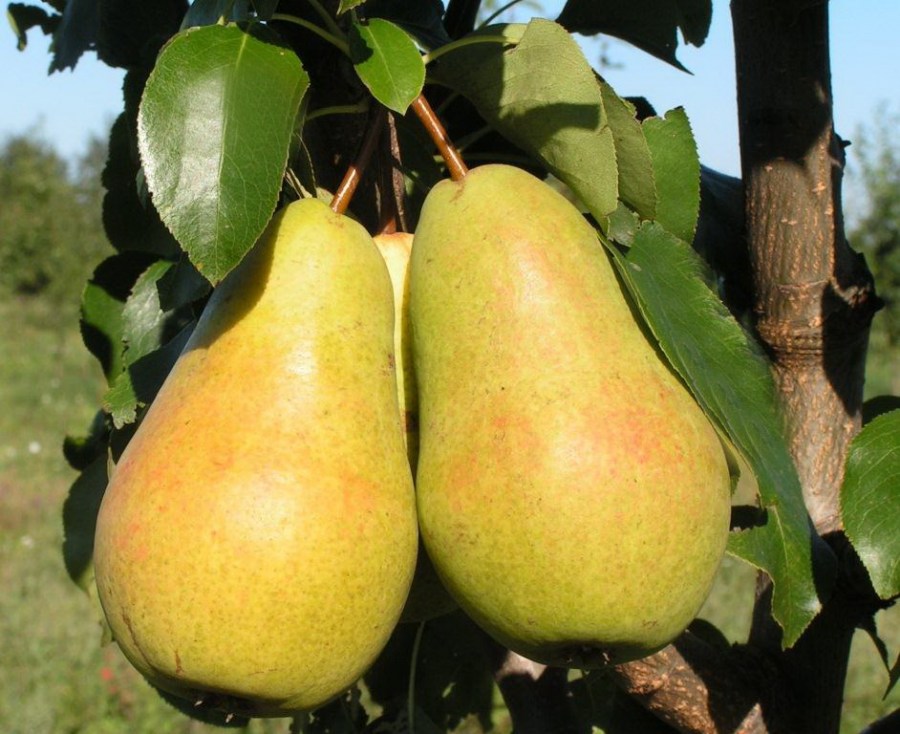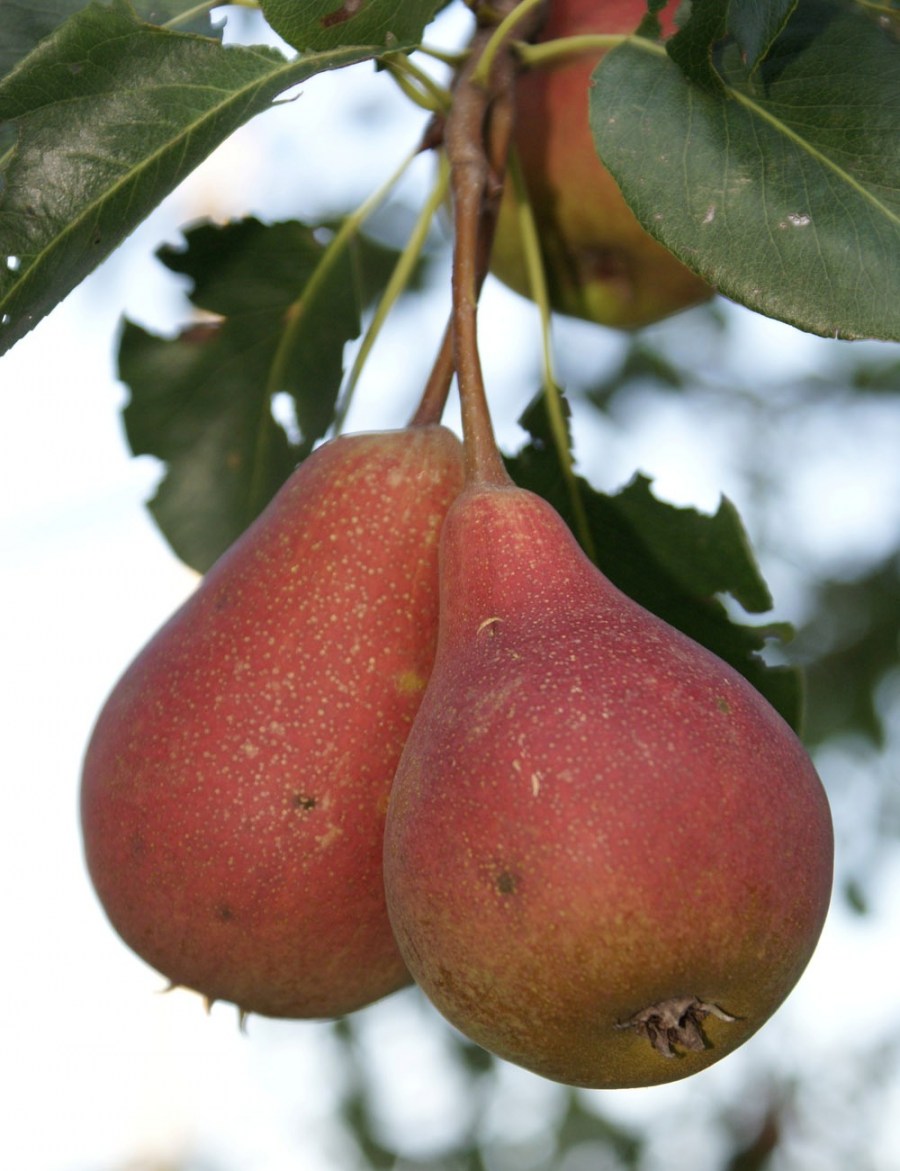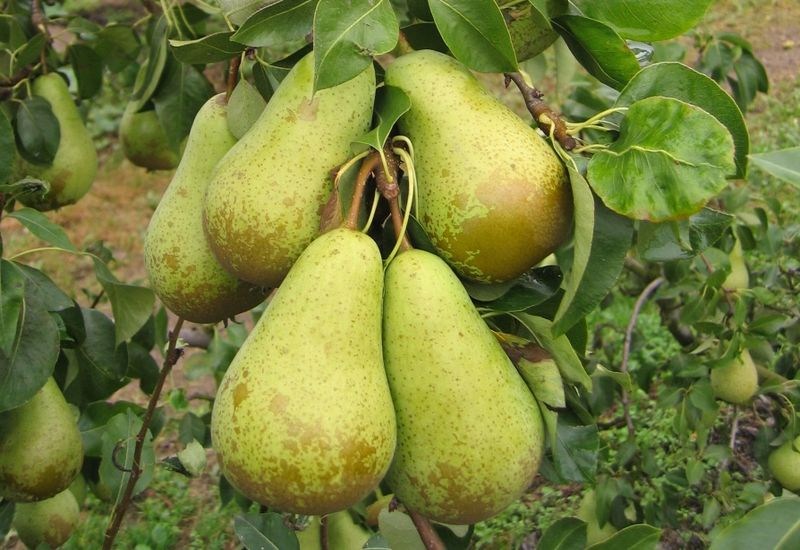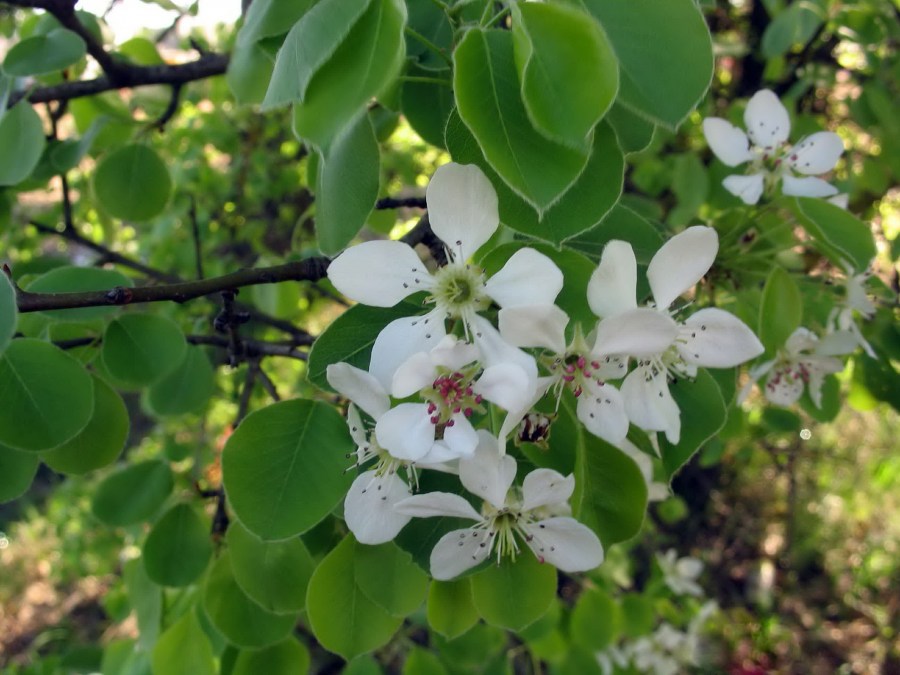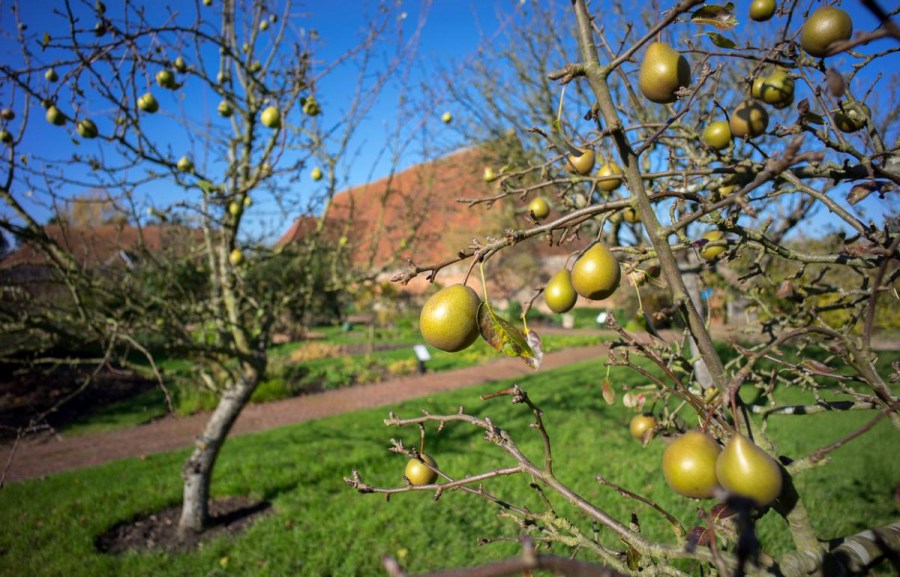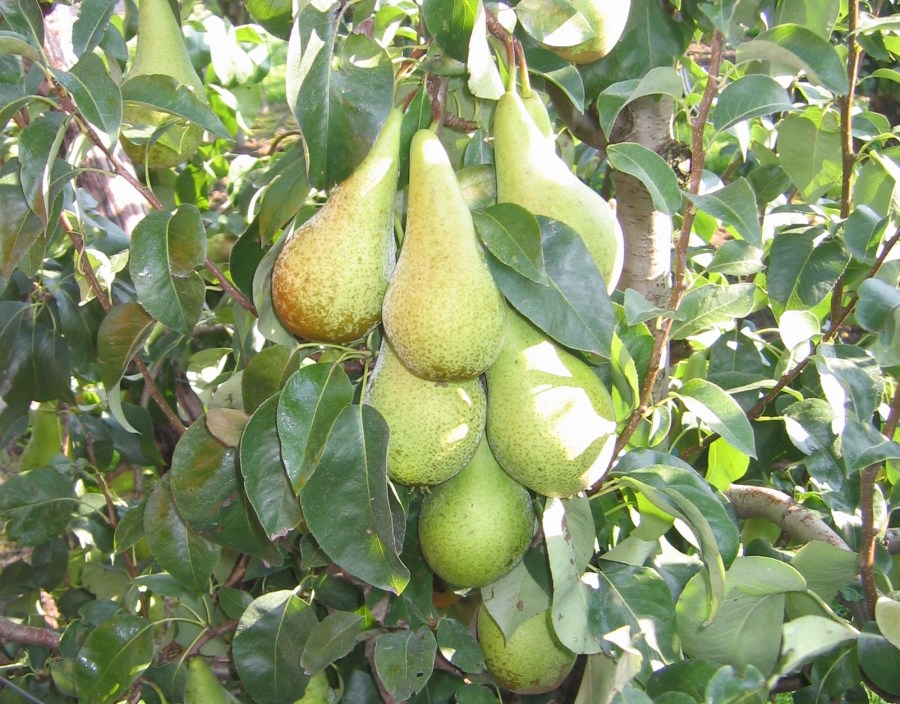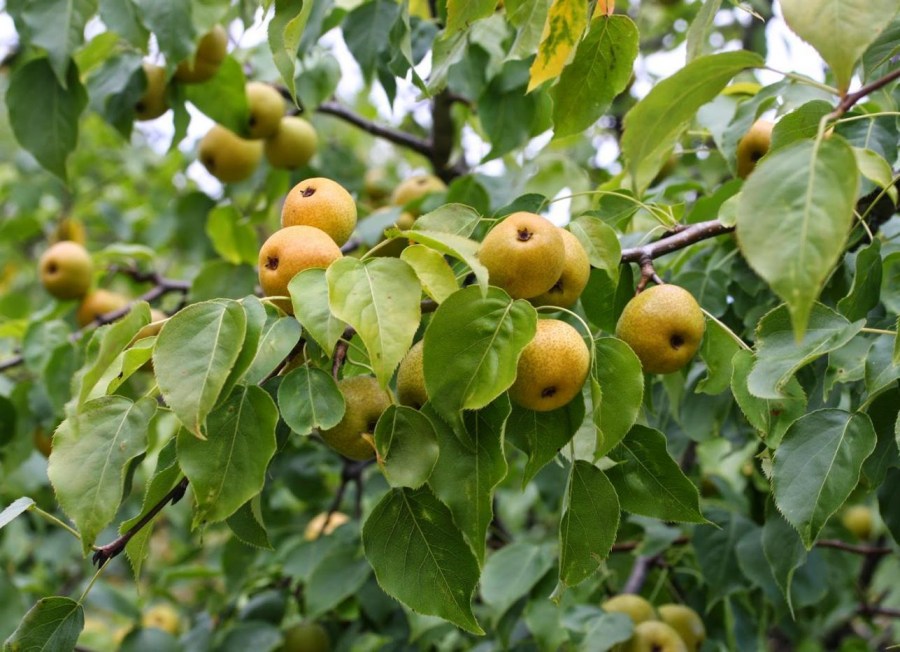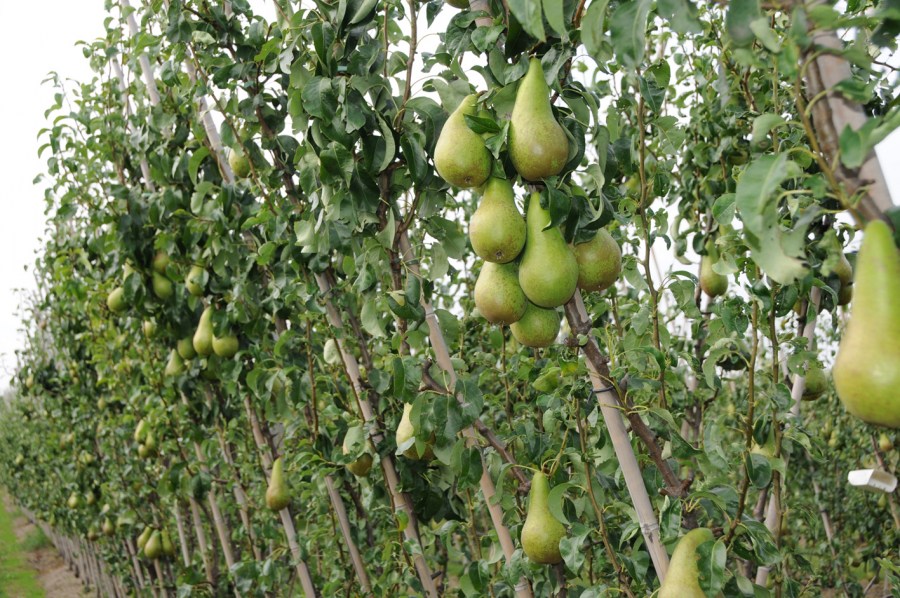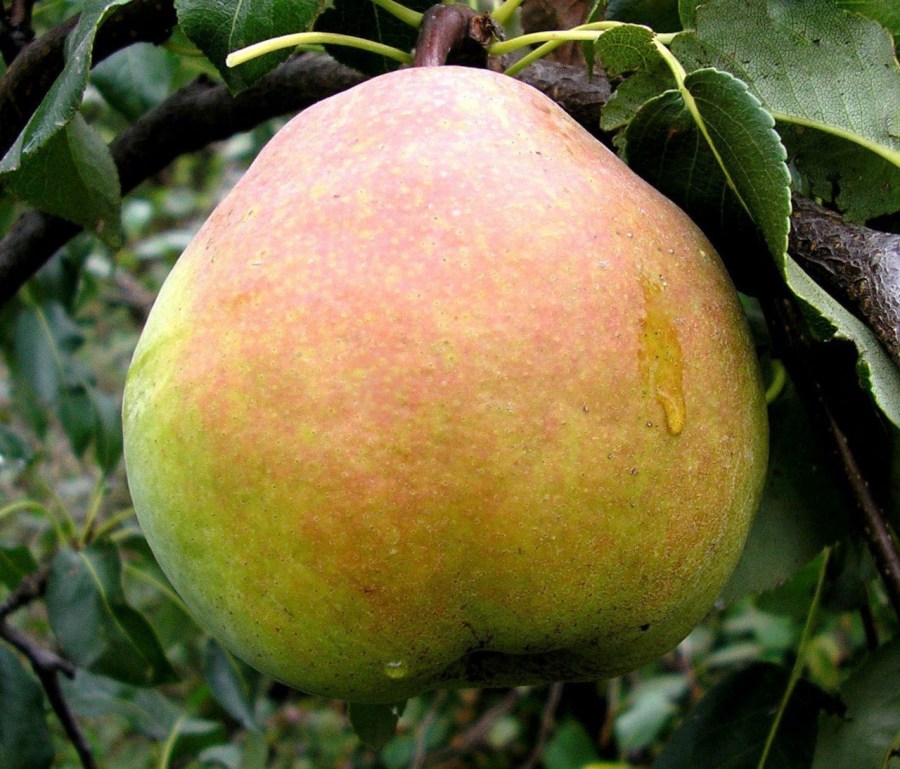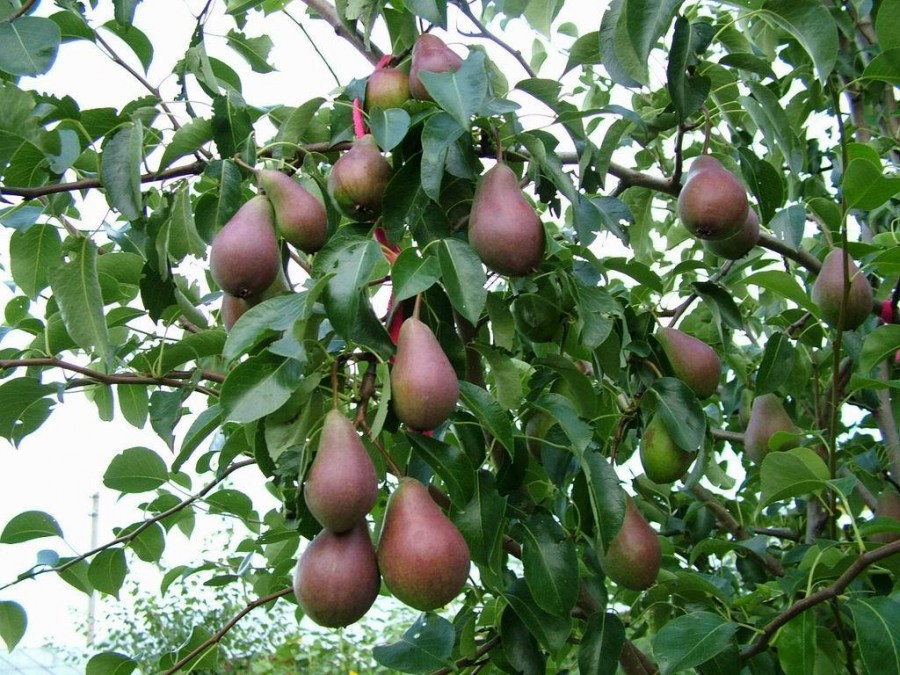Pear - what is the benefit for a person? Instructions from planting to harvesting for beginner gardeners
Pear is one of the five most popular fruit trees among gardeners. Pear is loved not only for its refined taste and aroma, but also for its hypoallergenicity. Pears are also considered an excellent urinary system medicine because pear fruits contain arbutin, which is good for the urinary system and kidneys. In addition, pears contain a large number of vitamins and minerals that favorably affect the health of the liver and kidneys.
However, growing pears is not easy. Unlike apple trees, pear trees do not like frost and sudden changes in temperature. They often freeze. Therefore, to get the first crop, it’s not enough just to plant a tree, it is important to properly monitor it.
When to plant?
Planting pears should begin by choosing the optimal time for planting. In different regions, pears are planted at different times.
In the north of Russia, it is recommended to plant pear trees in the spring, before the buds open, i.e. until the end of April. Then the seedling will take root before the onset of cold weather and survive the winter well. In the south of the country, spring comes earlier, so the beginning of autumn is considered the best time for planting pears.
It is also important to choose the right pear varieties, which are divided into three types:
- early ripening;
- mid-season;
- late.
The first type is ideally suited for the Chernozem region, it includes such varieties as "Yellow Summer", "Tonkovetka" and "Lada". For planting in the middle lane, the varieties Bessemyanka and Autumn Bergamot are suitable. Late-ripening varieties such as New Year's, Venus and Severyanka are also suitable.
Where to plant pears?
If you follow all the rules for planting pears, then the chance that the tree will successfully winter and bring a rich harvest increases. Due to the fact that pears love heat, it is recommended to plant spring and autumn varieties of pears in sunny areas covered from sudden gusts of wind.
Trees do not tolerate moisture, so when choosing a place, it is worth considering that pears will not survive stagnation of water. The ideal place for landing is a hill under which groundwater does not flow. The seedling does not take root on clay soils.
In the vicinity of other trees, pears are unpretentious, they quietly take root next to the apple trees. The only tree next to which the pear will not be very comfortable is rowan. This is explained by the fact that they are susceptible to attacks by the same pests, and when one tree is infected, the second will also suffer.
Pear Landing Pit
It is worthwhile to prepare a pit for planting a pear in the fall, even if you plan to plant trees in the spring. During the winter period, the soil will sag, and you can not be afraid of a tree sagging, which is dangerous because the root neck can be blocked by earth and the pear will die.
The depth of the pit for planting is determined by the size of the roots of the tree. For pears, a suitable depth is 40-50 cm, with a width of 1 meter.
To increase soil fertility, several buckets of earth with humus and peat can be poured into the pit; of course, a deeper pit should be dug. You can also fertilize a pear with superphosphate or ash.
How to choose a seedling?
Professionals advise using two-year-old seedlings for planting. When selecting seedlings, special attention is paid to the state of the tree itself, the young shoot must be elastic and not dry, with a smooth bark of the same color.
The height of the seedling is usually 70-80cm. The roots on the cut should be moist and bright.In order not to make a mistake in choosing, we advise you to see photos of pear seedlings that have successfully taken root.
Preparation for planting should begin by immersing the root system of the seedling in a container with a solution of a root stimulant, for example, root. It should also be added to the water, which will spill the landing recess. Long roots on the side and in the center before planting are cut off by ten centimeters, and leaflets, if any, are cut off.
Pear planting
A hill of fertile soil is poured at the bottom of the landing pit, the roots of the pear are straightened over this hill, and then they are sprinkled with earth.
The trunk of the tree should be slightly shaken and trampled to avoid air voids.
2/3 of the recesses are covered with earth, and then they are poured with 10 liters of settled water, it is important that it is at room temperature.
When the moisture is absorbed, the pit is filled up to the end. The root neck of the seedling should be 3-5 cm above the soil.
Novice gardeners can determine the location of the root neck by color, in this place the greenish bark of the trunk turns into a brownish color of the roots.
Now the soil is compacted by hand, and a small roller 5 cm high and 50 cm in diameter is made around the seedling. Another bucket of water is poured into the circle
When the water is completely absorbed, the soil is mulched, not approaching the trunk by 10 cm. And the seedling of an autumn or winter pear is tied to a support. After watering with a warm period, the soil should be mulched. But in order to prevent rotting of the young stem, the mulch should not be close to the trunk.
Pear Care
In order for the pear to grow rapidly and form a crown in the first years, it is necessary to provide it with nitrogen nutrition. The annual norm of nitrogen is divided into three parts, two of which are introduced in the spring, and one in the summer. If you use both mineral and organic fertilizers, then the portion of minerals should be reduced by one third.
In the second year, in the spring, it is necessary to fertilize the soil around the trunk with ammonium nitrate, and also do not forget to mulch with peat and humus. If there is not enough potassium in the soil in the area, then it is worth increasing the dose of fertilizers containing this trace element, pears love it very much.
Young seedlings often suffer from a lack of moisture, pests, bad weather and disease. Therefore, in the early years, it is especially necessary to carefully care for the trees, and if necessary, treat pears.
The most important aspects in the care of seedlings are fertilizing, constant weeding and proper watering in spring and summer, which is best done in the morning or evening using sprayers.
Pear pruning
Pears need regular pruning, as they need a lot of sunlight to fully develop. Pruning also allows the pear not to waste energy on growing young shoots, but to let all the useful trace elements to ripen the fruit.
And this has a positive effect on the quality of the crop. Yes, and it will be easier and more convenient to harvest if you do not let the tree grow up, but it is worth noting that the pears are quite tall trees.
So how to trim the pear correctly?
First, thin out the crown of the plant so that the sun warms up the fruitful branches and trunk. It is recommended that you cut the trunk by a quarter so that the plant does not stretch up. After trimming, you should treat the places of cuts with a compound that can be bought in a store for gardeners.
Pruning of trees should be carried out from the moment of planting, this will ensure the correct development of the crown of the plant. By 2 years after planting, the height of the seedlings is a maximum of 50 cm. This contributes to the growth of the lower branches.
The pruning tool is most often used for pruning. But sometimes you have to resort to a garden saw, when you need to cut strong thick branches of an old tree.
If you comply with all the conditions and rules for planting pears, then your work will certainly be awarded a large crop of incredibly juicy and fragrant pears.
Photo pears
DIY mailbox: instructions from 65 photos how to do it right
Motion sensor to turn on the light - 115 photos and selection recommendations
Hydrangea - 120 photo flowers. The main types, planting, care, breeding in the open ground
The facade of the house - how to make it beautiful and stylish? 110 photos of new design
Join the discussion:





